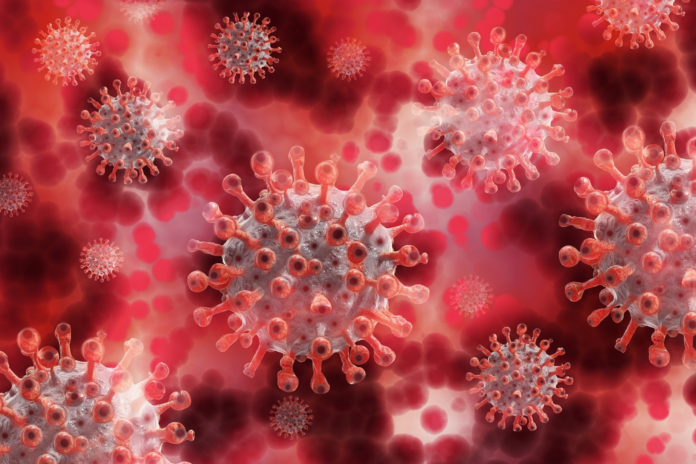(Foundation for Economic Education) — A recent survey found that more than one-third of Americans overestimate by as much as a factor of ten the probability a person with COVID-19 will require hospitalization.
Researchers involved in the Franklin Templeton/Gallup study asked Americans in December what “percentage of people who have been infected by the coronavirus needed to be hospitalized.” The correct answer is not precisely known, the authors note, but the best available estimates place the figure between one and five percent.
Many people’s perceptions of the data, however, were completely off.
“Less than one in five U.S. adults (18%) give a correct answer of between 1 and 5%,” the study authors said. “Many adults (35%) say that at least half of infected people need hospitalization. If that were true, the millions of resulting patients would have overwhelmed hospitals throughout the pandemic.”
The authors of the study say the conclusion is clear.
“The U.S. public is also deeply misinformed about the severity of the virus for the average infected person,” the study’s authors stated.
~60% of Americans think the chances somebody with Covid must be hospitalized are ~10x higher than they actually are
Survey by Gallup and Franklin Templeton pic.twitter.com/RgyxiJmcfD
— Eli Klein (@TheEliKlein) March 20, 2021
Why are Americans so misinformed?
The obvious question is why Americans are so wildly misinformed about the true risks of COVID-19.
One possibility is that Americans are receiving information that is skewing their sense of reality, and research confirms this hypothesis.
Studies have shown that US media in particular created a climate of fear by publishing a deluge of negative news in 2020. One Ivy League-led study found that 91 percent of US stories in major media were negative in tone (compared to just 54 percent in non-US media) — even when the virus was in retreat and positive results were being achieved.
“The negativity of the U.S. major media is notable even in areas with positive scientific developments including school re-openings and vaccine trials,” researchers noted. “Stories of increasing COVID-19 cases outnumber stories of decreasing cases by a factor of 5.5 even during periods when new cases are declining.”
A new @nberpubs paper shows how US media created a climate of #COVID19 fear.
“Ninety one percent of stories by US major media outlets are negative in tone versus fifty four percent for non-U.S. major sources and sixty five percent for scientific journals,” the authors concluded. pic.twitter.com/wIXRQYiuKw
— Jon Miltimore (@miltimore79) December 1, 2020
As I noted when the study was released, a global pandemic isn’t exactly a cheerful topic. Yet this fact alone doesn’t explain the discrepancy between U.S. media coverage and non-US media. Nor does it explain why negative news trends continue even during positive developments — such as declines in cases, hospitalizations, and deaths, as well as vaccine breakthroughs.
The steady drumbeat of negativity was described as “panic porn” by some media critics.
“Enough with the ‘life will never be the same’ headlines,” HBO pundit Bill Maher said back in April. “Everything looks scary when you magnify it a thousand times … We need the news to calm down and treat us like adults.”
That didn’t happen, however. Months later, as the virus had receded and scientists concluded COVID was not as deadly as previously thought, the media were still engaging in panic porn, characterizing Florida’s laissez-faire approach to the pandemic as a “death march.”
Why media and public officials engaged in panic porn for months is a discussion for another day. What’s apparent is that the phenomenon severely skewed Americans’ sense of reality as it relates to the actual dangers of COVID-19, a virus that does not require hospitalization for up to 99 percent of those infected.
Unfortunately, authors of the Franklin Templeton/Gallup study say, the disconnect has real-world consequences.
“Those who overestimate risks to young people or hold an exaggerated sense of risk upon infection are more likely to favor closing schools, restaurants, and other businesses,” the authors note.
Lockdowns: a policy of panic
The harms of these lockdown policies are well-documented: severe mental health deterioration, mass social unrest, health procedures deferred or foregone, soaring global poverty, increased suicide, extreme loneliness, and many others.
FEE’s Brad Polumbo recently testified before the US Senate on some of these dangers, noting that doctors across the world warn lockdowns have resulted in an “international epidemic” of child suicide.
These were policies born of panic.
“When people feel fear, they’re much more willing to accept anything that makes the world seem a little safer,” Sean Malone noted early in the pandemic in an episode of Out of Frame.
For far too long Americans were told they must sacrifice liberty by embracing lockdowns or risk mass fatalities. This was always a false choice, and a dangerous one. The reality is, passing sweeping legislation during panics is a recipe for bad outcomes. But all too often, that is precisely what happens.
In his work Crisis and Leviathan, the economist Robert Higgs observed that crises have been utilized to mount the biggest government power grabs in modern history. During the Great Depression it was the New Deal. Following the 9-11 attacks it was the War on Terror and the Patriot Act (and everything that came with them). In 2020 it was the lockdowns.
Each of these historic encroachments was driven by mass panic. In each instance, only in hindsight did it become apparent that the greater danger we faced was fear itself.
This isn’t to say there are not real threats in the world. The pandemic, terrorism, and the Great Depression were all genuine threats.
It’s only to say we must reject panic in our decision making, and those who would have us abandon freedom for the false promise of safety.
Jon Miltimore
Jonathan Miltimore is the Editor at Large of FEE.org at the Foundation for Economic Education. (Follow him on Substack: jjmilt.substack.com)
His writing/reporting has been the subject of articles in TIME magazine, The Wall Street Journal, CNN, Forbes, Fox News, and the Star Tribune.
Bylines: Newsweek, The Washington Times, MSN.com, The Washington Examiner, The Daily Caller, The Federalist, the Epoch Times.
He previously served in editorial roles at The History Channel magazine, Intellectual Takeout, and Scout. He is an alumni of the Institute for Humane Studies journalism program, a former reporter for the Panama City News Herald, and served as an intern in the speechwriting department of George W. Bush.


















